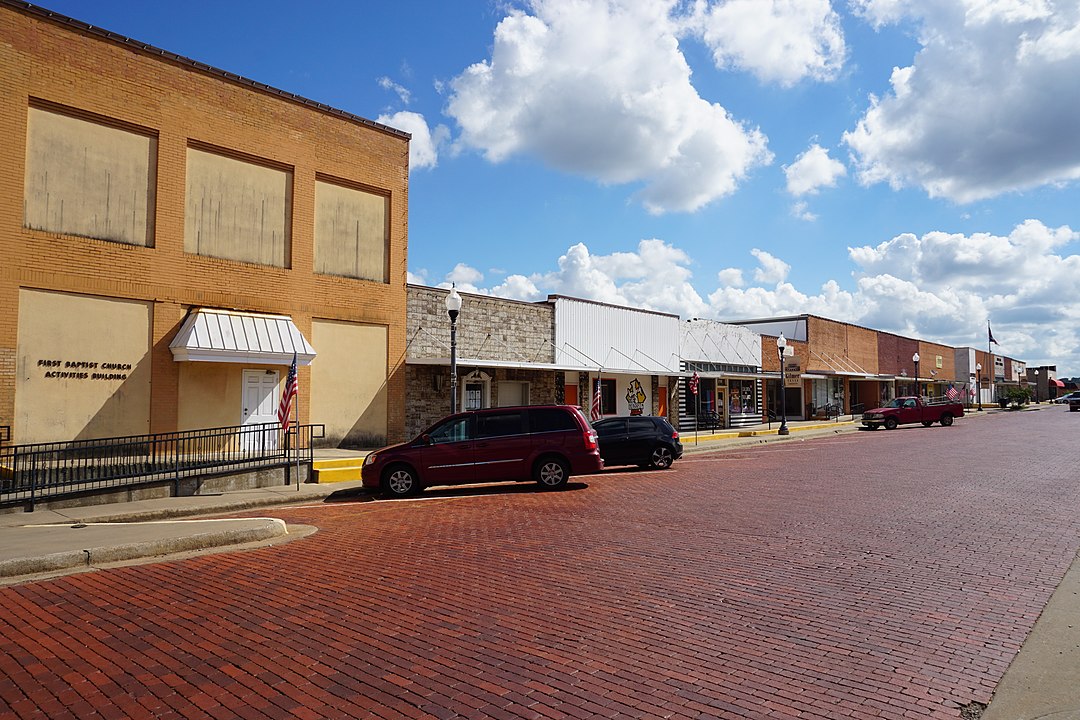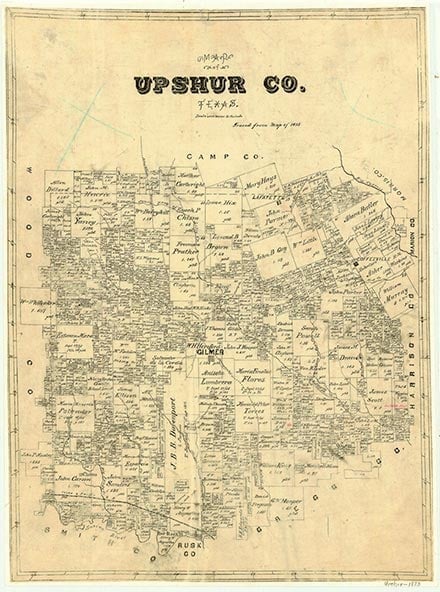Gilmer

Gilmer, Texas

Gilmer, the county seat of Upshur County, is on U.S. Highway 271 and State highways 155 and 154 thirty-five miles northeast of Tyler and twenty-two northwest of Longview in the central part of the county. When the county was established in 1846, provision required that the county seat be located within five miles of the geographic center and that it be called Gilmer, for Thomas W. Gilmer, who died during the test firing of a new cannon on the USS Princeton on February 28, 1844. The same explosion also killed United States secretary of state Abel P. Upshur. On December 15, 1846, when the fifth district court first met in Upshur County, Judge Oran M. Roberts held court in a grove of six oak trees at the residence of William H. Hart and declared that site the location of Gilmer until a more permanent location could be selected. The Gilmer post office opened in 1847. In 1848 county voters selected the permanent site. The original site came to be called Old Gilmer and was gradually abandoned; a historic marker on the Cherokee Trace three miles north of Gilmer marks the original site. Bethesda Masonic Lodge No. 142 received a charter in 1853 and sponsored the Gilmer Masonic Male Academy (1854). In 1861 the lodge rented the school building to Morgan H. Looney, who established Looney School; from 1868 to 1871 O. M. Roberts taught there. In 1860 Gilmer had twenty-five businesses, seven physicians, six law offices, two churches (Methodist and Baptist), two academies, and the post office. During the Civil War Gilmer businesses provided hats and leather goods to the Confederate States of America. Shortly after the war ended, members of the Ku Klux Klan beat up Meshack Roberts, a former slave of O. B. Roberts, who had helped him to become a landowner.
In its early years Gilmer served as a cotton-ginning center; it once had six gins in operation, and one continued until the 1950s. In 1890 farmers in the county began producing sweet potatoes but had to quarantine the crop in the late 1920s because of an infestation of sweet-potato weevils. When the quarantine lifted, residents organized the East Texas Yamboree, a fall festival to celebrate the sweet potato harvest; the first festival was held in October 1935. In the late 1980s the annual festival continued, with some 30,000 to 40,000 people attending in 1987. At that time it was one of the oldest continuing festivals in East Texas. On April 17, 1900, Dickson's Colored Orphanage was chartered in Gilmer. It was founded by a black Baptist preacher, the Rev. W. L. Dickson, and from 1900 to 1929 was the only orphanage for black children in Texas. Baptists in Dallas, Waco, and other cities contributed to its development, as did local Baptist churches and Gilmer businessmen. Robert C. Buckner served as chairman of the board of trustees. In 1929 the state took over the home and renamed it Gilmer State Orphanage for Negroes; the state continued its operation from 1930 to 1943, when the orphans were moved to Austin. In 1902 the Gilmer Independent School District was established; in the 1980s it had four schools in Gilmer. From 1920 to 1930, with the fall of the cotton market, Gilmer for the first time recorded a drop in population, from 2,268 to 1,963. In 1931, however, the East Texas oilfield rescued the town from the Great Depression. The new oil money went in part to construct a new courthouse, dedicated in 1937. By 1940 the population had grown to 3,138 and by 1950 to 4,192. Between 1960 and 1970 the population decreased slightly, mainly because of a new residential subdivision just outside the city limits. After Pine Acres joined the city, the population of Gilmer stood at 5,192 (1970).
Mary Laschinger Kirby | © TSHA

Adapted from the official Handbook of Texas, a state encyclopedia developed by Texas State Historical Association (TSHA). It is an authoritative source of trusted historical records.

- ✅ Adoption Status:
- This place is available for adoption! Available for adoption!
- Adopted by:
- Your name goes here
- Dedication Message:
- Your message goes here
Belongs to
Gilmer is part of or belongs to the following places:
Currently Exists
Yes
Place type
Gilmer is classified as a Town
Location
Latitude: 32.73391720Longitude: -94.94807600
Has Post Office
Yes
Is Incorporated
Yes
Population Count, 2021 View more »
4,894

